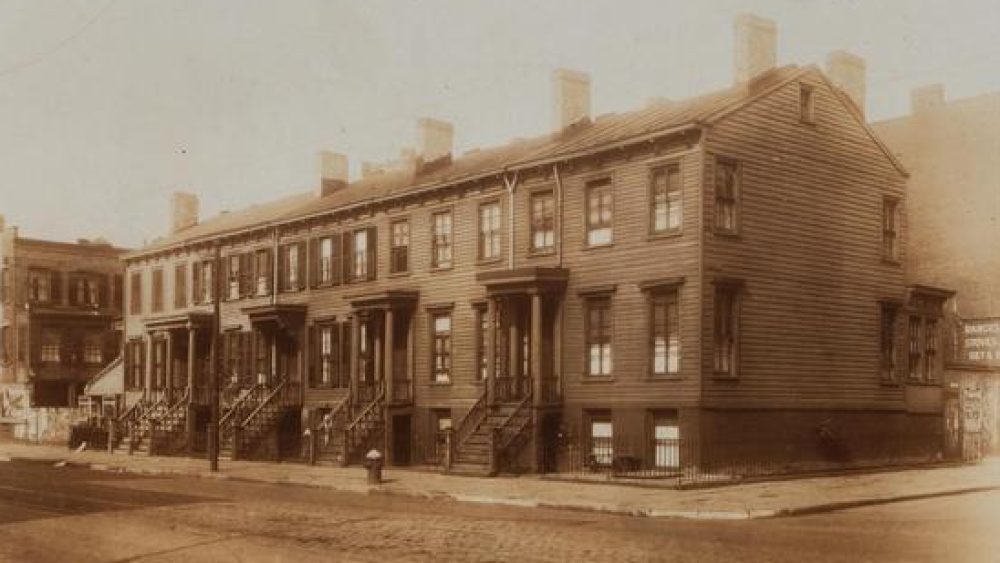 I’M ON THE 31st FLOOR of a classic Art Deco building in midtown Manhattan. From the window of my small but plush room at the New Yorker Hotel, I look down on water tanks and roof terraces and Garment District loft buildings, and feel I am really in the heart of an old city. The hotel opened in 1930, in between the Chrysler (1929) and Empire State (1931) Buildings (imagine the excitement of that time!) Both are visible from my window, but there’s very little in the way of later glass boxes. Looking directly due east from 8th Avenue, it’s almost as if the last 75 years never happened.
I’M ON THE 31st FLOOR of a classic Art Deco building in midtown Manhattan. From the window of my small but plush room at the New Yorker Hotel, I look down on water tanks and roof terraces and Garment District loft buildings, and feel I am really in the heart of an old city. The hotel opened in 1930, in between the Chrysler (1929) and Empire State (1931) Buildings (imagine the excitement of that time!) Both are visible from my window, but there’s very little in the way of later glass boxes. Looking directly due east from 8th Avenue, it’s almost as if the last 75 years never happened.
The original architecture lives on here, most majestically in the lobby, but also in the halls’ original ceiling fixtures and signage, and even the doors and moldings in the guest rooms. The porcelain tub, with its X-shaped chrome faucet handles, reminds me of my grandmother’s 1940s bathroom in Rego Park.
Renovated last year to the tune of $70 million and now operated by Ramada, the hotel is well past its heyday, when all the Big Bands and the likes of Joe DiMaggio wouldn’t stay anyplace else.
On this muggy, uninspiring day, there were tourists from Europe and Japan and American families thronging the lobby and elevators and the hotel’s Tick Tock Diner. Expedia.com has my room, a City View with queen bed, listed at $149/night this week.
I’m not enchanted with the mobs in midtown and I personally resent the ugliness of nearby Madison Square Garden and all that surrounds it, but I’m glad to be here. I’ve always been curious about what’s inside this 43-story Art Deco pile with the red neon letters that dates back to the days when travelers walked underground from Penn Station through a series of tunnels to emerge here in the grand lobby, still dominated by an astonishing chandelier.
A traveler could do worse.
From a hotel press release:
Situated in Manhattan at 34th Street and Eighth Avenue, The New Yorker Hotel was the largest hotel in New York when it opened in 1930 rising 43 stories and comprised of one million square feet. The New Yorker Hotel featured 2,500 guestrooms, two grand ballrooms, 10 private dining “salons” and five restaurants that employed 35 master cooks. The barber shop was one of the largest in the world with 42 chairs and 20 manicurists. There were 92 telephone operators and 150 laundry staff who washed 350,000 items daily. This was all supported by America’s largest private power plant located in the sub-basements of the property. When it was erected in 1929, the hotel cost $20 million to be constructed.
With the arrival of the “Big Bands,” the stage was set for the ‘heyday’ of The New Yorker Hotel. Society’s elite as well as political figures, business leaders, business travelers and tourists all gathered at the hotel to listen to entertainment from famous musicians including Benny Goodman, Woody Herman and Tommy and Jimmy Dorsey. The Brooklyn Dodgers and manager Leo Durocher chose The New Yorker Hotel as its headquarters during the 1941 World Series. New York Yankees great Joe DiMaggio once lived at the hotel when rehabilitating an injury during the baseball season.
The New Yorker Hotel was the epitome of luxury and first-class service when it opened. Guests were greeted by hotel bellman when they arrived at Pennsylvania Station on the B & O railroad and were guided through underground tunnels to the hotel’s grand lobby. Staff members were always on hand to meet the needs of its guests.








